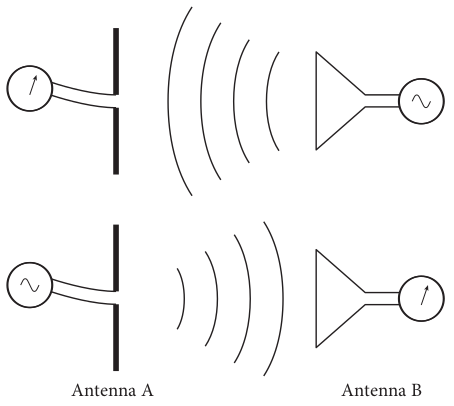- English
- বাংলা
Reciprocity theorem

The strong reciprocity theorem says: if a voltage is applied to antenna A and the current is measured at antenna B (top panel), then the same current will be found at antenna A when the voltage is applied to antenna B instead, in both amplitude and phase.
In many cases in radio astronomy, we do not care about the phase relationship between voltage and current and, hence, the weak reciprocity theorem is enough which relates the two interpretations of the beam of a radio telescope:
$$ G(\theta,\phi) \propto A_e(\theta,\phi) $$
where $G$ is the gain and $A_e$ the collecting area. For a lossless isotropic antenna the average area is simply $\lambda^2/(4\pi)$ and the average gain is unity. So
$$ A_e = \frac{\lambda^2}{4\pi} G $$
which means the collecting area can be calculated from the gain or power pattern and vice versa. The collecting or effective area is sometimes called the receiving power pattern or sensitivity pattern or simply beam.
